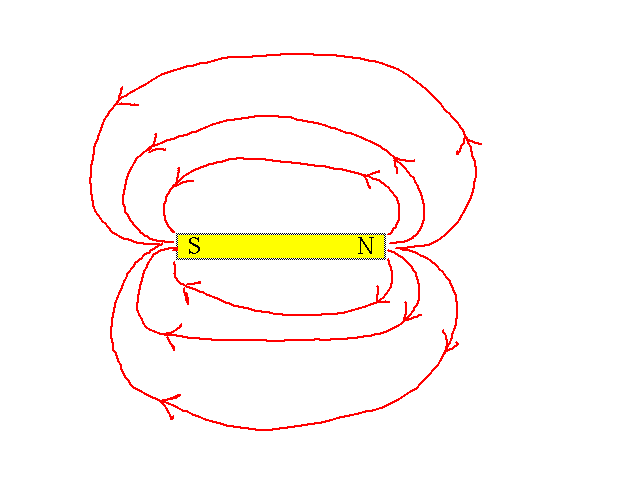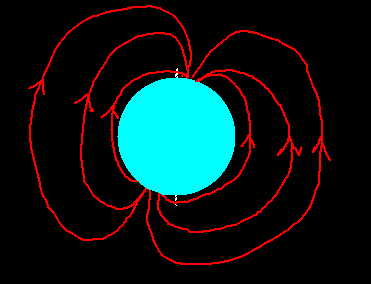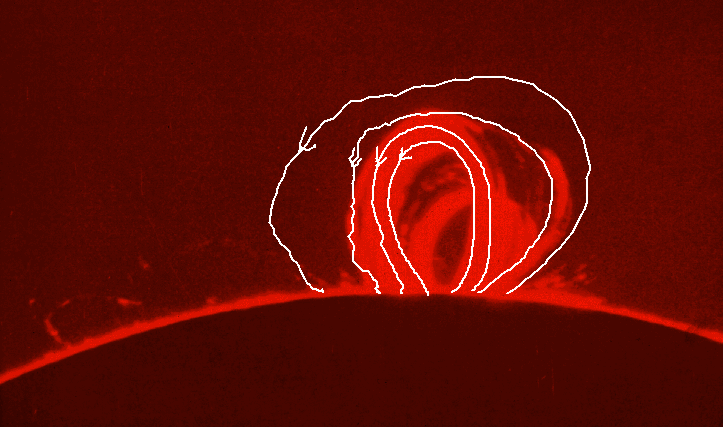Magnetic fields on the Sun
Experiments show physical systems create something that we call a
magnetic field. You can't see the magnetic field directly, but at each
point in space, we can measure how big the field is and in which
direction it points. A convenient way to represent the magnetic field
is with a drawing of "magnetic field lines." The direction of the lines
shows the direction of the magnetic field, while the density of lines
shows the strength of the field.

The Earth has a magnetic field. A compass is a device to detect
this field and point in the direction of the field, which is
more or less north.

Two observations (derived from experiment and the theory of
electricity and magnetism) are particularly important for the
sun:
- Very hot gasses conduct electricity.
- "conducting electricity" means that electrically charged
particles like electrons can move through the material easily.
- at 300 K, metals are good conductors of electricity because
many of the electrons are not attached to atoms but are free
to move around.
- at high temperatures, the electrons in, for example, hydrogen
and helium are often ripped off of the atoms. (The atoms are "ionized".)
- Thus the gas can conduct electricity. (It is a "plasma")
- This applies in the Sun, since it is so hot.
- Electrically conducting fluids cannot easily move across magnetic
field lines.
Sometimes you can see examples of hot gas held up by magnetic fields
on the Sun. ("Prominences")

Davison E. Soper, Institute of Theoretical Science,
University of Oregon, Eugene OR 97403 USA
soper@bovine.uoregon.edu



